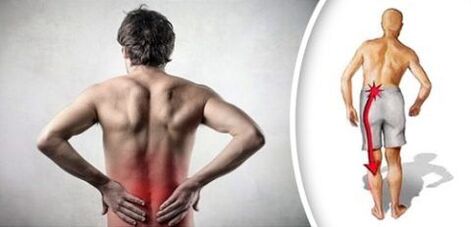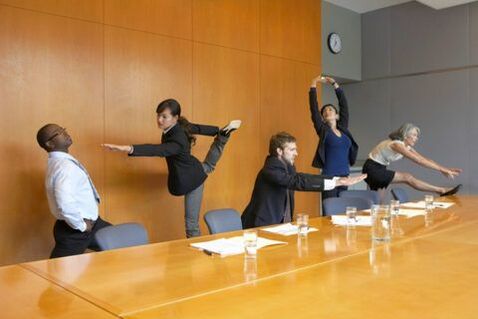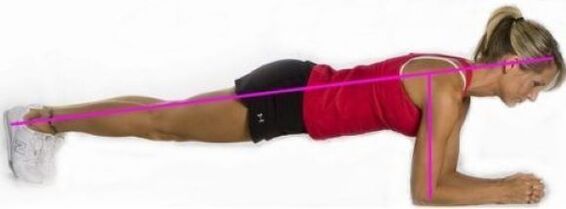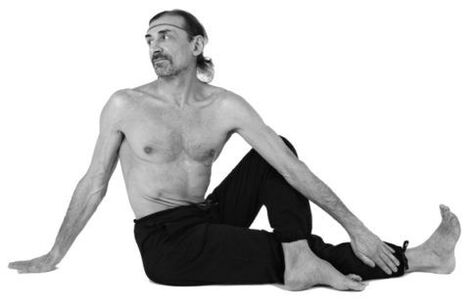The detection of metabolic disorders and the decomposition of glycoproteins in the lumbar intervertebral discs, vertebral bodies, articular surfaces and ligaments are in 90% of cases of all pathological changes in the spine with the general name.That is why questions about the lumbar spine osteochondria - symptoms and treatment available at home prevail above all else related to this pathology.

With what signs can you independently determine the appearance of the development of an irreversible disease and in what methods can it stop its further development?
Signs of osteochondry on the lower back
Progress of osteochon pathology progresses to 4 stages
- Osteochondria-Periodic-dystrophic changes on the ring plates and a change in the configuration of the jacket core located in the intervertebral disc.
- Lumbar region-Climative protrusion of the fibrous-shaped annular plates and the onset of the destruction of the nucleus of the pulp.
- Hernia- Rupture of the fibrous ring and the output of the nuclear mass that looks like a gel outside the disc.
- Osteophenically- Strait of the natural lumen between vertebrae, spreading the pathological process to the tissue of the vertebrae bones, their joints, joints and the bosses.
For information.It can accurately determine the degree of development of the osteochondination and the spine column in it - to make a diagnosis, only a doctor can be based on an analysis of the anesthetic and images of the CT and MRI tests.
Symptoms of lumbar spine, which occurred in the first stage, may be as follows:
- lower back discomfort.
- Increased sweating.
- Reduce the sensitivity of the skin to the lower back, hips, buttocks, foot and/or lower leg.
- Spasm of the arteries of the lower extremities, leading to the sense of coldness in them, the stinging and the "gooseberry running".
- peeling the skin in the lower extremities.
The price paid by people who ignore these basic characteristics - the development of protrusions, gardens and osteophytes.They not only interfere with normal life, but also threaten with disabilities.
Lumbar region ostechondrosis - Symptoms of Pain
If, with cervical and osteochondria, the pain often gives the hand, This pain with lumbar osteochondria radiates one, less often on both legs.
This pain with lumbar osteochondria radiates one, less often on both legs.
Acute back pain
Academy, unbearable, in most cases, bilateral pain and obvious muscle contraction at the lower back.Attacks can be repeated several times a year.
Years lumbalgia
The appearance of several weeks (months), dull and cunning pain, more often on one side of the back, at the level and below the waist.Pain syndrome occurs after a long -term stabilization of the hotel in an unpleasant posture or after hypothermia.
The principle of movement after a long state of rest or sharp slopes (turns, twist) enhances the pain.With repetitive periods, pain detection gradually extends to the sacred section, buttocks and foot.
Pottery reflex dystonia
Pain in the lower back and foot is accompanied by a chill at the bottom of the edge.After physical pressure, hypothermia can disappear and can intensify.
Vasodilator
Pain syndrome occurs with the growth of heat at the edges.During and after physical exercise, the hyperthem of the skin becomes very strong.
Radical and Rizopathy - Radical Syndromes
Characteristic of edema, pain and shelters in the lumbar region and the radiation of the pain in the foot are typical.
Their manifestation depends on the position and degree of damage to the intervertebral discs:
- L1: L2 - the front and the interior of the thigh hurts.
- L2: L3 - Radiation in the upper thigh and in the lower leg area, absence or reduction of reflexes in the knee joints, it is possible to develop scoliosis in federal type.
- L3: L4 - Pain in the lower back is free, while spreading along the thigh in front and inside the knee and slightly lower, an increased knee reflex appears and the knee itself injures moderately.
- L4: L5 - the sharp, pain in the lumbar region causes the firm fastening of the pathological configuration and the attitude layer in the form of "protective positions", the spasm of the pear formed and the pain determines the pain and the feet and the feet and the feet is:Pain: The ends, the power of the Achilles of the tendon weakens, the thumb is slightly extensive and it is possible to develop the dotted color.
Lumba -ilgia and radical
The main symptoms of lumbar spine osteochondryosis-L5: S1 inherent in Stage III of Pathology Flow:
- Back -back pain radiates to one or both legs from the type of pain syndrome and a decrease in reflexes that are inherent in damage to L4: L5,
- The compression of the arteries leads to a loss of skin sensitivity.
- The simultaneous manifestation of muscle, neurotrophic and stem-vascular syndromes.
- The disk prolapse causes the development of the "horse tail" syndrome - the unbearable acute pain syndrome is accompanied by numbness of the groin, as well as a violation of the colon's work of the colon and the organs in the basin, to the incontinence.
- Functional disorder of the gastrointestinal tract, liver, as well as a frenzy of chronic diseases, for example, colitis, hemorrhoids.
Attention!There are many tips from therapists who are convinced that osteochondria is the deposition of salts in the spine and folk "drugs" can dissolve and remove them from the body without a trace.Since osteochondria has a different mechanism of growth and current, each such directive is 100% to get rid of osteochondria is a charlatan that can cause tangible health damage.
Treatment of the lower back osteochondry
To prevent osteochondry with sedentary work, it is necessary to perform 10 minutes of "unloading" exercises, a cluster of which should be performed once a time.

The treatment of lumbar osteochondrication is always performed in the complex, but it also depends on the stage of developing the disease:
| Treatment methods | The degree of osteochondicity | ||
| I | Ii | III-IV | |
| Surgery | - | - | + |
| Anesthetic drugs | + | + | + |
| Non -stroid anti -inflammatory drugs | - | partly | + |
| Hormonal drugs and antidepressants | - | - | + |
| Protection | Effectiveness is not proven | ||
| Treatment of Vitamins (Group B) | + | Inefficacious | |
| Massage | + | + | + |
| Manual treatment | + | partly | - |
| Swimming, hiking + | + | + | |
| Running cowardice and jumping exercises | partly | - | - |
| Dynamic gymnastics exercises | + | + | partly |
| Static yoga exercises | + | + | + |
| Classes to simulators with weighting | + | partly | - |
Great!An unavailable component of the treatment of osteochondicity at any stage is the normalization and strict adherence to the daily consumption-consumption regime of pure water per day, as well as the optimization of the diet to reduce body weight and further maintain the body of the body of the body from 18.5 to 24.5.
Modern medicine has not come up with a drug that will cure osteochondria.If you find the first symptoms of osteochondry, don't waste valuable time - start moving more and eating properly!Today are the only effective measures that can slow down or stop the progression of the disease.
The daily practice of two simple yoga positions will even help lazy to stop the pathological processes developed on the lower back.Since these "magic" exercises are simple and performed enough static to examine the photo.

The bar should be maintained from 10-15 seconds, gradually increasing time in 3 minutes, without forgetting rhythmic breathing: inhales with its nose, exhaling through the lips folded with a tube.

During this twist of Marichiasan, which lasts from 15 seconds to 1.5 minutes, which is performed in every direction, it is necessary to make a light spine drink that will help insert the vertebrae into the place without resorting to the services of a manual therapist.
The spine osteochondria is inevitable because even in the absence of aggravating causes: a hereditary predisposition, an inactive way of life, a profession that uses heavy physical work, excess body.Only a healthy and active lifestyle can slow down these processes, which must fight to maintain up to old age.


















































